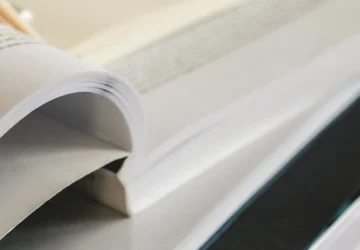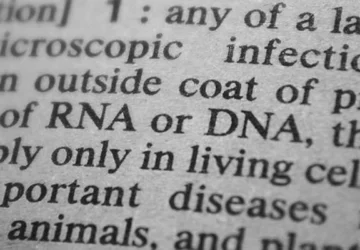
How to Publish a Book: A Step-by-Step Guide for New Authors
For every new author, the dream is the same. It is the moment of holding a finished, physical book in your hands. It is the smell of the paper, the weight of the object, the sight of your name on the cover. It is a dream of validation and completion.
But between the final period of your manuscript and that physical object lies a dense, confusing, and often intimidating process. How do you get a book published?
For centuries, there was only one path. You had to be “chosen” by a gatekeeper a publisher in London, New York, or Paris. Today, the landscape is fractured. That old path still exists, but a new one, paved by technology, has emerged alongside it.
This means the modern author’s first and most critical choice is not about agents or cover design. It is a strategic choice between two fundamentally different business models: Traditional Publishing and Self-Publishing.
Why this split? Because the invention of the e-reader and, more importantly, the print-on-demand (POD) press (like Amazon’s KDP) completely democratized the means of production. For the first time in history, authors no longer needed a publisher’s permission or their massive printing presses to create a professional-quality book and sell it globally.
This guide will demystify both processes. There are no other viable paths. (So-called “Hybrid” or “Vanity” presses are almost always predatory, asking you to pay thousands of dollars for services of questionable value). There is only the “old way” and the “new way.”
Let’s be clear: neither path is “easy.” Both require immense work. The real question is, what kind of work are you willing to do?
The Great Divide: Traditional vs. Self-Publishing at a Glance
Before we dive deep, here is a high-level comparison of the two paths. This is the most critical decision you will make, as it affects your timeline, your costs, your control, and your potential income.
| Feature | Traditional Publishing | Self-Publishing (Indie Publishing) |
| Upfront Cost | None. You are paid an “advance” against royalties. | All costs are yours (Editing, Cover, Formatting). |
| Control | Almost none. You sell your rights. The publisher controls cover, title, edits, and price. | 100% control. You are the CEO. You make every decision. |
| Timeline | Glacial. 1.5 to 3 years after you sign a contract. | As fast as you can work. A book can be live in weeks. |
| Royalty Rate | Low. 5-15% of net (not cover) price. | High. 40-70% of the cover price. |
| Gatekeeping | Extremely high. You must secure a literary agent, who then sells to a publisher. | None. You can publish anything you want, at any time. |
| Marketing | Varies. But for new authors, 90% of the work still falls on you. | 100% of the work falls on you. This is the real job. |
| Prestige | High. The “validation” of being chosen by experts. | Low to none. Validation comes only from sales and readers. |
| Distribution | Strong. The ability to get your book into physical bookstores. | Strong online (Amazon). Very weak in physical bookstores. |

Path A: The Traditional Gauntlet (Seeking a Publisher)
This is the path of validation. You are choosing this route because you want the prestige of a major publisher’s logo on your book’s spine and the validation of being “chosen.” You are willing to trade control for this.
Here is the step-by-step process.
Step 1: Finish the Book.
This is non-negotiable. No agent or publisher in the world will look at an “idea,” a partial manuscript, or an unpolished first draft. You must have a complete, finished, and polished book. “Finished” means you have written it, rewritten it, and edited it to the absolute best of your human ability.
Step 2: Research and Create Your “Query” List.
You do not contact publishers. You contact literary agents. Publishers (like Penguin Random House or HarperCollins) almost never accept “unsolicited” manuscripts. An agent is the true gatekeeper. They are the industry experts who will champion your book, negotiate your contract, and be your business partner.
You must research agents who represent your specific genre. Do not send your fantasy novel to an agent who only sells romance. Use online resources to build a list of 10, 20, or 50 agents who are a perfect fit for your book.
Step 3: Write the Perfect Query Letter.
This is the single most important page you will ever write. It is not a summary of your book. It is a sales pitch. A query letter is a one-page, professional business letter that must accomplish three things:
-
The Hook: A one or two-sentence “elevator pitch” for your book.
-
The “Blurb”: A short, 250-word summary of your book, written like the back-cover copy. It introduces the main character, the conflict, and the stakes. It does not spoil the ending.
-
The “Comps” and Bio: You must include “comparative titles” (e.g., “This book will appeal to fans of ‘Gillian Flynn’s ‘Gone Girl’ mixed with ‘Paula Hawkins’ ‘The Girl on the Train'”). This shows you understand your market. Finally, a one-sentence bio about yourself.
Step 4: Write the Synopsis.
Many agents will ask for a synopsis with your query. This is the document everyone hates writing. Unlike the query, the synopsis is a 1-2 page summary of the entire plot, from start to finish. Yes, you must spoil the ending. The agent needs to see that you can successfully structure and resolve a story.
Step 5: Query, Wait, and Handle Rejection.
This is the “gauntlet.” You will send out your query letter (and synopsis/partial manuscript, if the agent’s guidelines ask for it) in small batches. 90% of them will be rejections. You will get form letters that say “This is not for me.” You will be “ghosted” and never hear back.
This is normal. This process can take months, or even years.
If an agent is interested, they will request a “partial” (the first 50 pages) or the “full manuscript.” This is a huge victory. You send it, and you wait again.
Step 6: “The Call” and The Offer of Representation.
If the agent loves your book, they will schedule a phone call. This is “The Call.” They will tell you why they love the book, perhaps suggest some revisions, and offer to represent you. You have now secured an agent. This is the biggest hurdle cleared.
Step 7: “On Sub” (Submission).
After you and your agent have polished the manuscript, they will send it “on submission” (or “on sub”) to editors at the major publishing houses.
You wait again. This can take another 6-12 months.
Step 8: The Book Deal.
If an editor loves it, they will make an offer. Your agent will negotiate the deal, which includes an “advance.” An advance is not a salary. It is an “advance against royalties.” This means if they give you a $10,000 advance, you will not earn a single cent in royalties until your book has earned back that $10,000 for the publisher. Most books never “earn out.”
Step 9: The 2-Year Wait.
Once you sign the contract, your work is just beginning. You will be assigned a house editor and go through 1-2 more rounds of intense editing. You will have little to no say on the cover design or the title. The entire production process—from signing the contract to the book appearing in stores—takes, on average, 18 to 24 months.
The Pros: Validation, prestige, no upfront costs, and the power of a publisher’s distribution network to get your book into physical bookstores.
The Cons: A soul-crushingly slow process. A near-total loss of creative control. A tiny royalty rate. And the brutal, rejection-filled hunt for an agent.

Path B: The Entrepreneurial Frontier (Self-Publishing)
This is the path of control. You are choosing this route because you are an entrepreneur. You want 100% creative control, you want to move fast, and you want to keep the vast majority of your profits. You are willing to take on all the financial risk and do all the work.
When you self-publish, you are not an author. You are a business.
Step 1: Finish the Book.
This is the same as Path A. You must have a complete, finished book. But “finished” here means something different. It is just the first draft.
Step 2: You MUST Pay for Professional Editing.
This is the single most important step in self-publishing. It is not optional. This is where 99% of self-published books fail. You cannot edit your own book. Your friends cannot edit your book. You must hire a professional. There are three levels:
-
Developmental Edit: The “big picture” edit. Does the story work? Is the pacing right? Are the characters flat?
-
Copy Edit: The “line by line” edit. Fixing grammar, clunky sentences, and flow.
-
Proofread: The final pass to catch typos, extra spaces, and formatting errors.
This will be your single biggest expense. Expect to pay hundreds, or even thousands, of dollars. But it is the difference between a professional book and an amateur one.
Step 3: You MUST Pay for a Professional Cover.
This is your second most important expense. Your cover is 90% of your marketing. It is a sales tool. It does not matter if you are an artist. Unless you are a professional book cover designer who understands your genre’s specific visual language, you must hire someone. A cheap or homemade cover will kill your sales before they even start.
Step 4: Formatting and ISBNs.
You must format your manuscript into the files needed for publication. This means an “epub” or “mobi” file for e-books and a precisely-formatted PDF for print. You can learn to do this yourself (using software like Vellum) or hire a formatter.
You must also get an ISBN (International Standard Book Number). You can get a free one from Amazon KDP, but it’s smarter to buy your own from your country’s official registrar (like Bowker in the US). Owning your own ISBN means you are listed as the publisher, not Amazon, giving you full control.
Step 5: Write Your Blurb, Keywords, and Categories.
You are now the marketing department. You must write your own back-cover copy (the “blurb”). You must research the specific keywords readers type into Amazon to find books like yours. You must research the categories your book will compete in. This is a business skill you will have to learn.
Step 6: “Pushing the Button” (Uploading).
You will create an account on a platform like Amazon KDP (Kindle Direct Publishing) and/or IngramSpark. You will upload your formatted manuscript files, your cover file, and all your marketing data (blurb, keywords, price). You set your own price. You hit “Publish.”
Your book will be live and for sale worldwide in 24-72 hours.
Step 7: The REAL Work Begins: Marketing.
This is the part everyone forgets. Pushing “publish” is not the end. It is the beginning. No one knows your book exists. Marketing is now your full-time job, and it is 100% on you. This includes:
-
Building an email list (your single most valuable asset).
-
Running paid ads (on Amazon, Facebook, BookBub, etc.).
-
Begging for reviews (reviews are the lifeblood of an online book).
-
Managing your author platform (social media, website, etc.).
The Pros: 100% creative control. 100% of your rights. Speed to market. High royalty rates (up to 70% on Amazon). A direct connection to your readers.
The Cons: You pay for everything. You do everything. There is a “stigma” (though it’s fading). It is almost impossible to get into physical bookstores. Marketing is a difficult, relentless, full-time job.
Conclusion: It’s Not a Finish Line, It’s a Starting Line
There is no “right” way to publish a book. Both of these paths are valid. Both are incredibly difficult.
The choice is not between an “easy” path and a “hard” path. The choice is: What kind of hard do you want?
Traditional publishing is the “hard” of patience. It is the hard of waiting years, of facing constant rejection, of having no power. It is an emotional marathon.
Self-publishing is the “hard” of entrepreneurship. It is the hard of financial risk, of learning new business skills, of facing the lonely, uphill battle of marketing. It is a business marathon.
Your decision should be based on your personality and your goals.
Do you dream of validation, of seeing your book in a store, and are you willing to wait years and give up control to get it? Traditional is your path.
Do you dream of control, of building a direct relationship with readers, of moving fast and building a business? Are you willing to invest in yourself and learn the craft of marketing? Self-publishing is your path.
Getting your book published is not the end of the dream. It is the start of your career. Choose your path, and then be prepared to work.
Recommended for you

Top Books for Medical Students
Medical school is an onslaught of information. You will spend the next four years (and beyond) immersed in a world of complex facts, intricate diagrams, and high-stakes exams. Your primary focus, understandably, will be on mastering the science of medicine. But becoming a great doctor requires more than just knowing the Krebs cycle or the […]

Top Modern Novels Worth Reading
What makes a novel “modern”? The word itself is a trap. Does “modern” mean new? Does it mean it was written in our lifetime? Or does it refer to a specific, explosive period in art (capital ‘M’ Modernism) that shattered every rule it could find? We believe it’s all three. The “modern novel” isn’t just […]

Philosophy Books That Change Worldviews
Some books are entertainment. Some are information. A very small few are dynamite. They don’t just add to what you know; they change how you know it. They are philosophy books that change worldviews by locating the hidden assumptions you live your life by the very foundations of your “common sense” and putting a metaphorical […]

Choosing Textbooks for First-Year Students
Becoming a first-year university student involves a series of new, confusing, and often expensive decisions. None is more immediate or frustrating than your first trip to the campus bookstore. You are handed a list of required texts for your five new classes, and the total at the bottom of the receipt could easily fund a […]

Molecular Biology and the Books That Defined It
What is life? For millennia, this question was the domain of priests, philosophers, and poets. It was a question of “spirit,” of a “vital spark,” of a “ghost in the machine.” Then, in the middle of the 20th century, a new group of thinkers took over. They were physicists, chemists, and biologists, and they approached […]

How to Choose a Horror / Gothic Book: A Reader’s Guide
Stop judging a book by its cover. This is true for all literature, but it is an iron law for horror. A bloody axe, a screaming face, a shadowy figure on the cover these things rarely signal a truly terrifying book. More often, they signal a cheap thrill. The real masterpieces of the genre, the […]

How Fiction Can Support Learning and Imagination
For centuries, a persistent myth has haunted our perception of reading. It is the myth of the “serious” versus the “frivolous.” In this binary, non-fiction is the “serious” stuff. It is the realm of facts, history, science, and learning. Fiction, on the other hand, is cast as the “frivolous” sibling. It is entertainment. It is […]

Best Biographies of Influential Figures
What makes a biography “great”? The simple answer is “accuracy.” A good biography, we assume, is one that gets all the facts right. It has the correct dates, the verified quotes, the detailed footnotes. This answer is true, but it is incomplete. It is the answer for a historian, not a reader. A simple collection […]